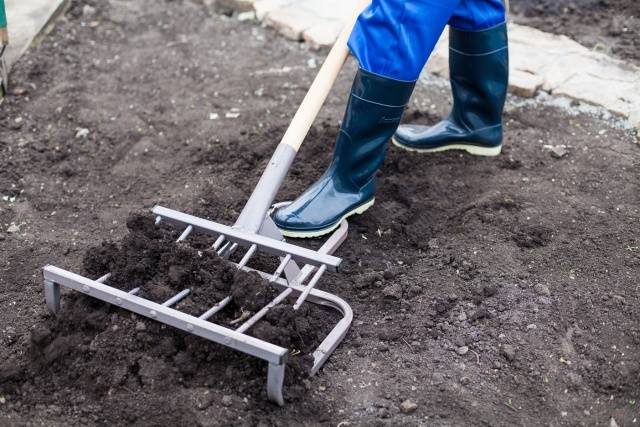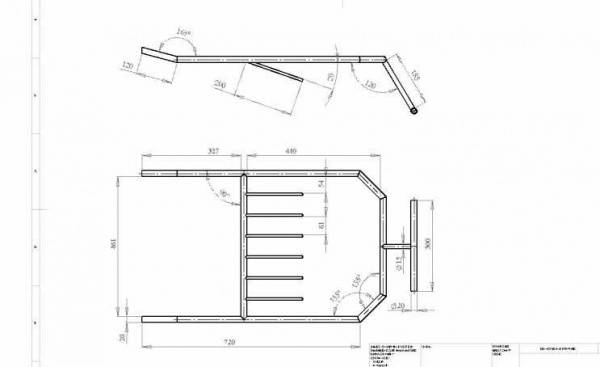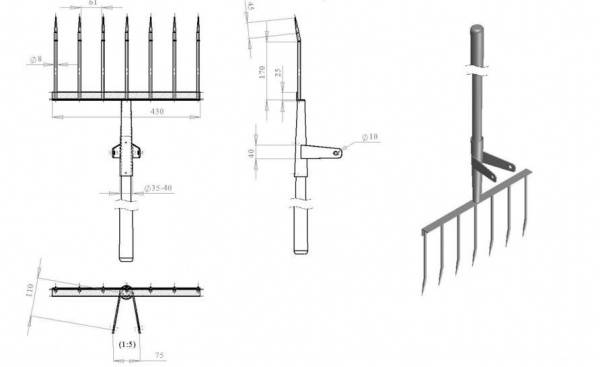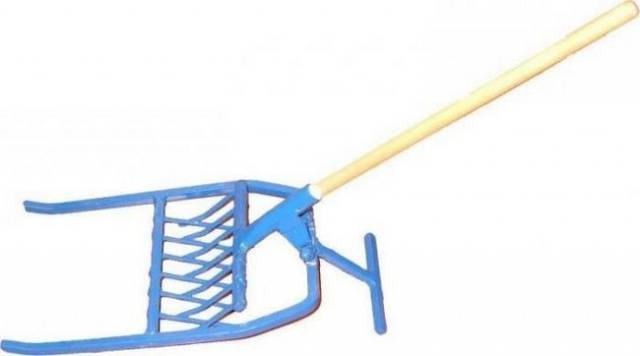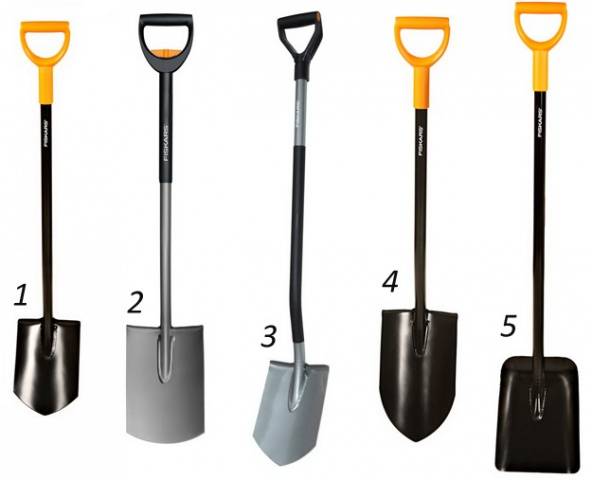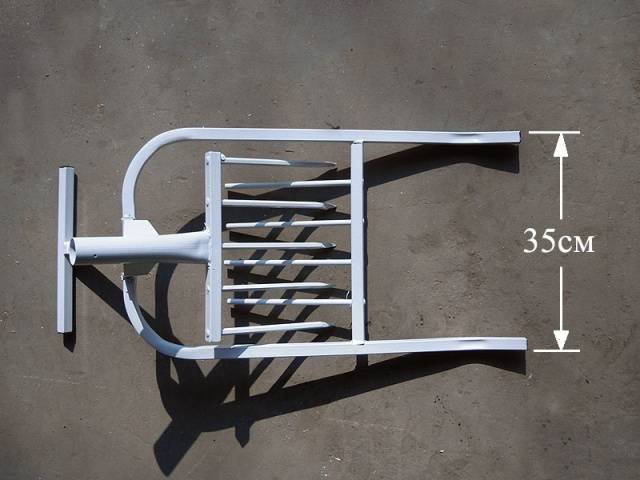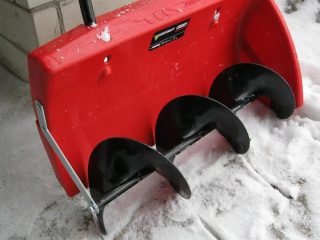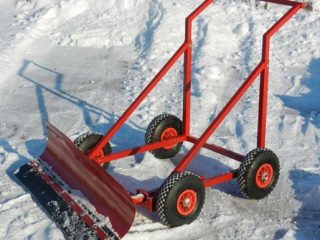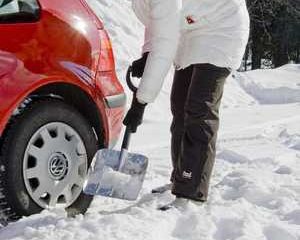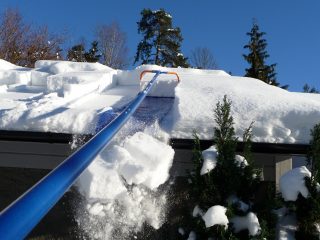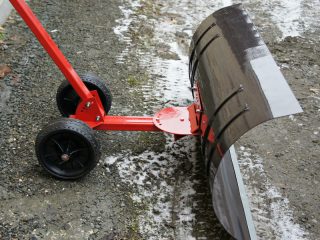Content
For the processing of a land plot, gardeners use not only a walk-behind tractor, but also primitive devices. Previously, they were made independently, but now you can find factory-made options. One such tool is a miracle shovel called the Plowman. In appearance, these are double forks that form a soil ripper. During work, the raising of a layer of earth with a shovel of the Plowman occurs due to the lever from the effort of the hands, and not the back.
How to use the tool
The principle of using a shovel is simple. Digging of the earth takes place with a backward step of about 10–20 cm. To make it clearer, a person moves forward with his back, dragging an instrument behind him. After installing the shovel on the ground, the working forks are pressed in. To do this, step on a special stop with a foot.
While loosening the soil with the Plowman's shovel, pressing can also be performed on the upper jumper of the working forks. At first, this method may seem inconvenient due to the distant location of this element. In addition, from habit, the leg will cling to the stop. However, the developer originally envisioned just such a way of working. Over time, after several workouts, a person realizes that this is the most convenient and easy option. After all, pressing the pitchfork into the ground does not come from the effort of the leg, but from the body weight. A person only needs to move his body forward a little.
This mode of operation will not result in pain in the hip joint after processing 1–2 hectare of the garden. With the acquisition of skills, the leg intuitively moves past the stop to stand on the jumper of the working pitchfork. The Plowman also has its drawbacks, but the tool is still easier to work with than an ordinary shovel.
The video demonstrates the work of the miracle of a shovel on solid ground:
Shovel device Plowman
Before considering drawing miracle tool, you need to understand how it works. The shovel consists of two pitchforks. One part is stationary and the other is movable. When the working forks lift a layer of soil, it passes through the teeth of the stationary part and the clods of earth are crushed. Thus, loosening occurs to a depth of 15–20 cm.
The plowman is produced in several modifications, differing in size. However, according to reviews, the miracle shovel Plowman is more in demand with a frame width of 35 cm.The tool weighs about 4.5 kg. In this case, the length of the frame is 78 cm, and the working forks are 23 cm. The shovel has 5 teeth and is usually sold without a handle. The diagram shows the main nodes of the tool.
From the drawing it can be seen that the device is a miracle of a shovel is simple. In addition, it does not pose a danger to a person being injured while working. The working part is a wide pitchfork. They are fixed to the common frame with two stops providing the element's mobility. The teeth are welded to the stationary frame inside. An emphasis of two elements is made in front. It is an extension of the frame. The Plowman's backgauge is shaped like the letter T.
The frame itself is made of a hollow tube. This ensures the lightness of the tool. The teeth are made of hardened steel. To work the miracle, the shovel is placed on a wooden handle.
Abilities miracle shovel
The tool is designed to facilitate manual labor associated with loosening the soil.Compared with the traditional bayonet version, this device allows you to process about two hundred square meters of land in 1 hour. At the same time, labor costs are minimized.
Depending on the size of the shovel, in one pass, a strip prepared for the garden bed with a width of up to 43 cm is obtained. If necessary, loosening can be done to the full depth of up to 23 cm or superficially, without driving the forks completely into the ground. During digging, roots rise with teeth weeds to the surface, but are not torn to pieces. This prevents them from further reproduction.
Why is a Plowman better than an ordinary shovel
The main advantage of the Plowman is the need to apply less effort. Having worked for a couple of hours with a bayonet shovel, a person feels severe back fatigue, as well as pain in the hip joint. The plowman gets rid of this trouble.
As for tillage, after using a bayonet shovel you have to break up clods and level the ground with a rake. After the Plowman's passage, there is a bed ready for planting. The tool can even quickly dig up a small garden for planting potatoes.
Another advantage of the Plowman is the pitchfork. The continuous cutting blade of the bayonet not only separates the roots of the weeds, but also chops up the earthworms. The pitchfork has narrow tines, which in no way can harm the beneficial inhabitants of the earth.
Why is a plowman better than a walk-behind tractor
Of course, a cultivator or walk-behind tractor is many times superior in productivity to hand tools. However, here you can also find the benefits of the miracle shovel. Let's start with economy. The plowman does not require refueling of oil and fuel, purchase of consumables and spare parts for repairs.
With a walk-behind tractor, it is not always possible to get into hard-to-reach areas of the garden. In addition, the unit has an impressive weight, and has the ability to bounce on hard ground during cultivation with a cutter. After several hours of such work, a person feels severe fatigue in his arms and back.
Making a plowman with your own hands
Of course, this tool is easier to buy, but if there is metal and welding at home, then why not make the Plowman yourself. There is nothing difficult in this. You just need to carefully read the diagram.
The width of the self-made Plowman depends only on his desires. With an increase in this indicator, the work process accelerates, but at the same time fatigue accelerates. It is usually optimal to make a tool with a width of 35 to 50 cm, but no more.
The principle of assembling the structure is as follows:
- For the manufacture of fork teeth, hardened steel rods are selected. Flat rolled products with a width of up to 20 mm or reinforcement are suitable. The number of bayonets depends on the width of the frame. They are welded, adhering to a minimum step of 100 mm.
- The forks need to be sharpened to make them fit easily into the ground. To do this, the grinder makes cuts at an angle of about 30about... For chernozem, the cut angle can be reduced to 15about, but such bayonets will dull faster.
- Next, make a supporting bar. Here you can use reinforcement, but then the weight of the shovel will increase. It is better to give preference to a square pipe of at least 10 mm.
- The base for the handle is welded from a piece of 50 mm thick circular steel pipe.
- The stop bar is bent with an arc made of sheet steel with a minimum thickness of 5 mm. The place of the fold is welded to the base for the cutting, and the opposite two ends are then fixed to the bar of the stationary frame.
When all the elements are welded, you get the working moving part of the miracle of the shovel. Next, you need to make the second stationary half. It is made in the same way, only the teeth do not need to be sharpened. The frame is bent out of the square tube so that two stops are formed in front. A T-shaped stop is welded on the back of the shovel. The connection of the two parts of the shovel is made movable. To do this, lugs are welded to the carrier bar and the stationary frame, after which the two elements are connected with a bolt or hairpin.The end of the work is the installation of a wooden handle.
Testimonials
Instead of summing up, let's take a look at the reviews of gardeners about the miracle of a shovel Plowman.
